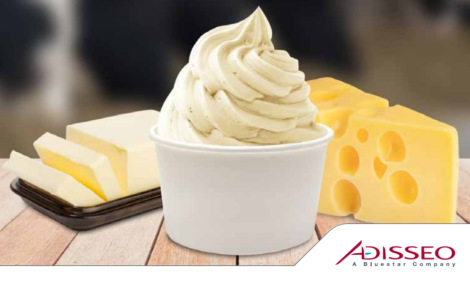



South Korea Dairy and Products Annual Report 2011
Korea‟s per capita consumption of dairy products is expected to grow about 15 per cent over the next decade reflecting a strong economy, Koreans‟ exposure to a Western diet, a rise in fast food outlets, and a growing appetite for pizza and pasta, according to the USDA Foreign Agricultural Service.Executive Summary:
On March 7, 2011, the Ministry of Strategy and Finance (MOSF) announced temporary duty reductions on dairy products to ease inflation due to the massive slaughter of livestock caused by the food-and-mouth disease (FMD) epidemic and colder than normal winter weather. Duties were eliminated on 30,000 tons of powdered skim & whole milk; 3,500 tons of butter; 40,000 tons of processed butter dairy spreads; and 23,000 tons of mozzarella cheese through the end of 2011. On June 27, 2011, MOSF announced zero-duty TRQs for the second half of 2011 on dairy products including 18,500 tons of milk and cream; 1,200 tons of fresh cheese; and 24,000 tons of other cheese.
Once implemented, the Korea-U.S. free trade agreement will eliminate the 36 per cent import tariff on imported cheddar cheese (HS0406.90) over 10 years and duties on other cheese (0406.10) will be phased out over 15 years. FTAs are expected to expand the market share for the United States and the EU at the expense of New Zealand and Australia.
FMD forced the slaughter of 34,000 dairy cows (8 per cent of 430,000 national herd) which some thought would result in a shortage of fluid milk. While fresh milk for consumers is in sufficient supply, milk for bakery use is expected to run short.
Raw Milk Supply & Demand Prospects for 2016-2021
| 2010 | PROSPECTS | ||||
|---|---|---|---|---|---|
| 2011 | 2016 | 2021 | |||
| Supply | Inventory from Previous Year | 55 | 13 | 54 | 67 |
| Production | 2,073 | 1,869 | 2,048 | 2,023 | |
| Import | 1,135 | 1,164 | 1,267 | 1,378 | |
| Total | 3,263 | 3,046 | 3,369 | 3,468 | |
| Demand | Consumption | 3,249 | 3,039 | 3,313 | 3,398 |
| Inventory | 13 | 7 | 56 | 70 | |
| Total | 3,263 | 3,046 | 3,369 | 3,468 | |
| Precipitate Consumption(Kg) | 62.8 | 62.2 | 68.3 | 70.4 | |
| Source: Agriculture Outlook 2011 / Korea Rural Economy Institute | |||||
Trends
In 2010, retail sales of fluid milk products increased by 3.4 per cent to reach $3.3 billion in value terms. After an extended decline in retail volume since 2005, the slow economic recovery resulted in a marginal increase in retail volume sales in 2010. However, the increase in retail value sales was attributable to the increase in unit price rather than the small increase in retail volume terms. Animal feed prices increased substantially during 2009 and 2010, raising the price of raw milk. Fat-free fresh/pasteurized milk registered the highest retail value growth rate of 5 per cent in 2010. Seoul Dairy Cooperative continued to be the leading fluid milk producer with a 36 per cent value share in 2009. Drinking milk is expected to show marginal growth of less than 1 per cent in near future.
Cheese sales are expected to continue to record strong growth as major manufacturers focus attention on developing the cheese market and more Korean consumers accept cheese as a source of calcium. While drinking milk and yoghurt are well known products in Korea, cheese is relatively new, has more room for growth, and manufacturers are expected to expand the number and types of products they carry in order to appeal to a wider range of consumers.
Foodservice is expected to see a turnaround in the performance and realize positive growth with a near 1 per cent in volume terms. With the economic recovery, more Korean consumers are expected to enjoy dining out and pizza and other Italian cuisine that normally use cheese will see growth in the future. Cheese has also been used for various fusion menus at times and with the recovery of consumer foodservice it will show positive growth in the future.
Further Reading
| - | You can view the full report by clicking here. |


